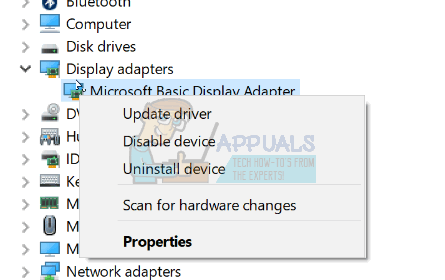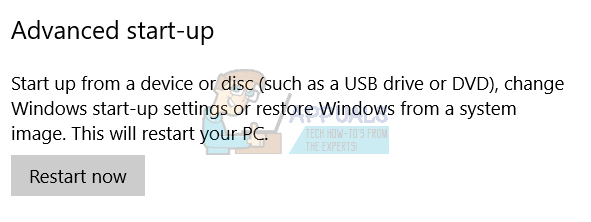Many hypothesized that this was simply the Windows 10 Creators Update’s Adaptive Brightness setting interfering with the display brightness, but this theory has since been debunked. Some affected users are even unable to change their display brightness back to their preferred value after a reboot, and the only way they are allowed to do so is if they disable and then enable their display adapter in Device Manager first. Having your display brightness change every single time you boot your computer up can be a horrifyingly annoying ordeal. Thankfully, though, this problem is not at all an unsolvable one – the following are the most effective solutions that you can use to try and get rid of this issue.
Solution 1: Disable the Brightness Reset task in Task Scheduler
In various editions of Windows 10 – such as Windows 10 Education – there is a scheduled task named BrightnessReset which causes display brightness to be reset to its default value every time a computer running on the Creators Update is rebooted. If the BrightnessReset task is causing this problem in your case, here’s what you need to do in order to resolve it:
Solution 2: Disable Low Power Mode in the Intel GPU Control Panel
If your computer has an Intel GPU, integrated or otherwise, the cause of this issue in your case may be an Intel GPU Control Panel feature by the name of Low Power Mode. If that’s true, simply disabling this feature should get rid of the problem for you. To disable Low Power Mode, you need to:
Solution 3: Update your display adapter’s driver software
You might be experiencing this problem because the driver software your computer has for its display adapter is outdated and not entirely compatible with the Creators Update. This has been found to be the most common cause of this problem for affected users with NVIDIA GPUs, although users with AMD GPUs can also experience this problem because of outdated GPU drivers. If outdated GPU drivers are the cause of your sorrows, all you need to do in order to fix the problem is update your GPU’s drivers. To do so, simply: If Windows does not find any updated driver software, however, make your way to the Downloads section of the official website of the manufacturer of your computer’s GPU and search for driver software for your GPU and Operating System combo just to be sure that you have the latest drivers available. If a newer version of the drivers for your GPU and Operating System combo are available on the website, simply download and manually install them, and see if that fixes the problem.
Solution 4: Roll back to the Windows 10 build you were previously using
If none of the solutions listed and described above have worked for you, you can simply get rid of the Windows 10 Creators Update and this problem by rolling back to the Windows 10 build that you were previously using. Provided that it hasn’t been 30 days since you installed the Creators Update (at which point the installation files required for the rollback are deleted by your computer), the process should be a quick and simple one. In order to roll back to the Windows 10 build that you were previously using, you need to: Once you have successfully rolled back to an older build of Windows 10, you can just stay on it and delay the Creators Update until Microsoft resolves this problem and any other issues that you may have been facing on the Creators Update.
Fix: Slow Wifi Issues After Installing Creators UpdateFix: Desktop Icon Issues after Creators UpdateHow to Fix Low FPS issues after Creators UpdateSurface Laptop 3 Reportedly Suffering Black Screen Issues At Lowest Brightness…

